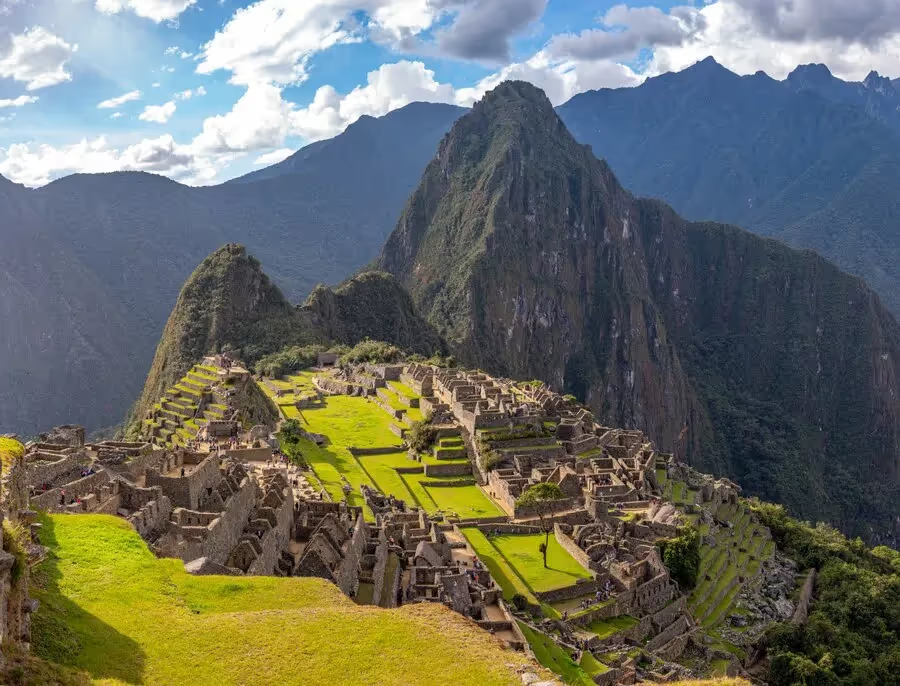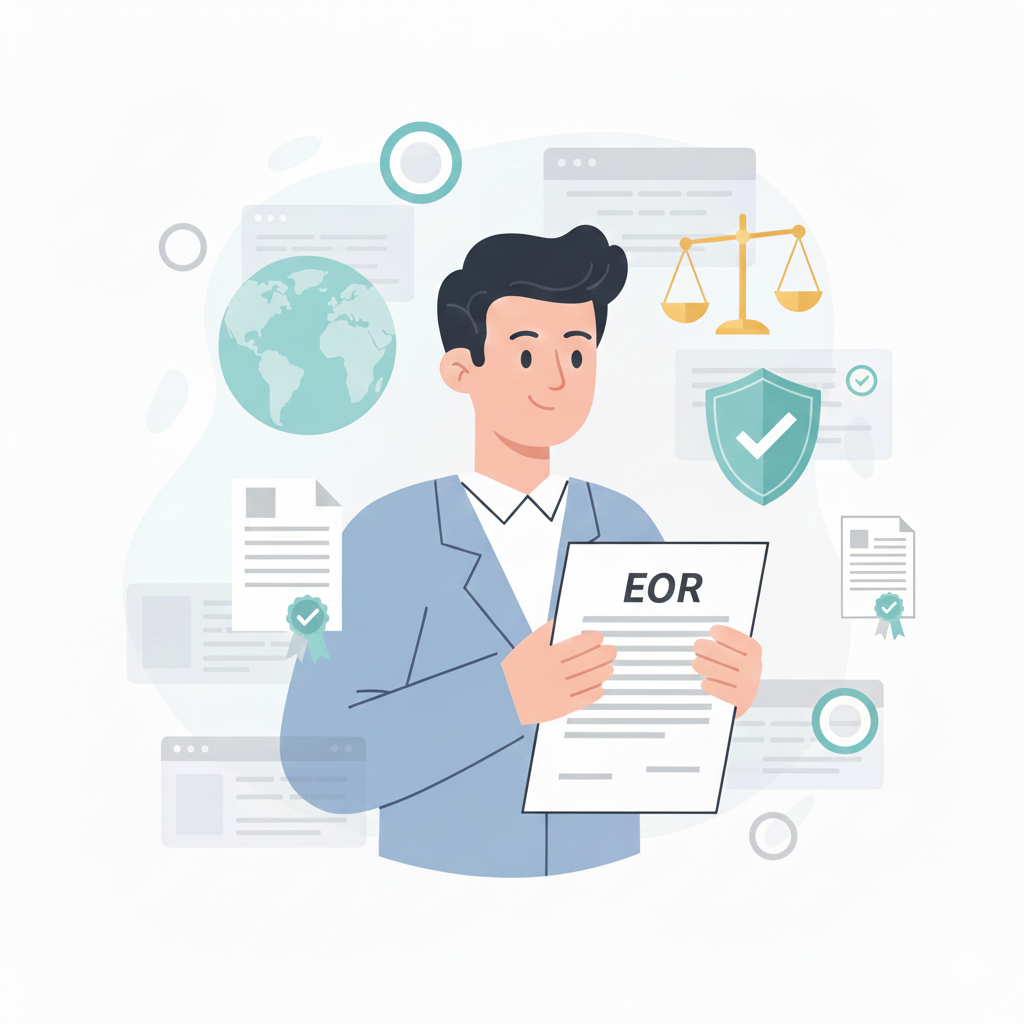Peru's dynamic job market, underpinned by a robust mining sector and a rapidly expanding services industry, positions it as a compelling destination for hiring. The urban migration has shifted the workforce away from traditional agriculture, strengthening industrial contributions to the GDP. With economic resilience showcased through a recovery in GDP per capita, Peru offers a fertile ground for business investment.
The country's diverse talent pool, especially skilled in sectors like mining, manufacturing, and services, aligns well with global business needs. Peru's competitive labor market provides a strategic advantage for companies in search of high-quality talent at reasonable costs, making it an ideal locale for expanding or initiating global operations.

What you need to know before hiring employees in Peru
Job market in Peru
- Peru's economic rebound is anticipated in 2024, driven by improved conditions for private sector investment and less severe weather impacts than expected. This recovery is supporting an increase in fiscal revenues, helping to reduce the deficit and stabilize public finances.
- With inflation rates forecast to decrease, the Central Reserve Bank of Peru is positioned to implement rate cuts. This easing of monetary policy is designed to bolster economic activity without putting undue pressure on the national currency.
- The unemployment rate in Peru has shown a decrease, reflecting a strengthening job market. This trend supports a positive outlook for both job stability and creation, contributing to broader economic health.
- The sol (PEN) is expected to experience mild fluctuations against the dollar, stabilizing by the end of the year due to a favorable current account surplus and monetary policy adjustments, enhancing the competitiveness of Peruvian exports.
- GDP per capita is projected to grow significantly by 2029, indicating an ongoing improvement in economic prosperity and productivity across Peru, providing a promising environment for business expansion and investment.
Peru Hiring Trends
For 2024, the hiring trends in Peru reflect a cautiously optimistic economic recovery, influenced by several key factors:
- The rebound in Peru’s economic activity is expected to enhance hiring opportunities, particularly in sectors like construction, manufacturing, and services, which are rebounding from a contraction in 2023.
- The mining sector, a significant contributor to Peru’s economy, will continue to offer employment opportunities, although growth may normalize. This sector remains a stable hiring ground due to ongoing and new mining projects.
- Geopolitical situations and global economic conditions will influence hiring trends, especially in export-driven sectors. A favorable global economic outlook may increase demand for Peruvian exports, supporting more hiring in related sectors.
- With a recovering economy, there is an expected increase in roles within the technology and services sectors. This includes areas like IT, customer service, and financial services, driven by digital transformation and the need for more sophisticated service offerings.
- The Central Reserve Bank of Peru's (BCRP) monetary policy adjustments, including potential interest rate cuts, could lower operational costs and encourage businesses to expand their workforce.
- Increased public investment, particularly in infrastructure, is likely to spur job creation in construction and related industries, benefiting from government spending in public projects.
How to hire employees from Peru
1. Set up an entity in the country
Engaging employees directly in Peru without a local entity is possible but involves navigating complex business and tax regulations. To establish a sustainable presence and ensure compliance, it is advisable to set up a local entity such as a Sociedad Anónima (S.A.) or Sociedad Comercial de Responsabilidad Limitada (S.R.L.), and register with the local tax authorities. This process includes obtaining a Tax Identification Number (RUC) from the Superintendencia Nacional de Aduanas y de Administración Tributaria (SUNAT).
While the process can be intricate and requires careful planning, obtaining professional guidance or legal support can facilitate a seamless establishment, allowing the business to operate efficiently in Peru.
2. Hire independent contractors
Hiring independent contractors in Peru offers flexibility and may be economically advantageous for businesses requiring specialized expertise or temporary assistance on projects. To engage contractors effectively, companies should draft comprehensive agreements that clearly detail the project scope, timeline, compensation terms, and mutual obligations. It is essential to comply with Peruvian labor laws to avoid any misclassification of their employment status. Independent contractors in Peru are responsible for their own tax and social security contributions, which simplifies payroll processes for the hiring organization.
3. Partner with an EOR in the country
Partnering with an Employer of Record (EOR) in Peru can simplify the hiring and management of employees, particularly for companies that do not have a local presence. An EOR handles all legal responsibilities, payroll, taxation, and human resources tasks, allowing businesses to focus on their core operations. This partnership is particularly beneficial for companies looking to test the Peruvian market without establishing a full local entity or for those needing to quickly integrate talent in line with local employment laws. Utilizing the expertise of an EOR helps businesses effectively meet their staffing needs while ensuring full compliance with Peru's complex regulatory landscape.
Employment Laws You Must Know Before Hiring in Peru
Compliance risk while hiring in Peru
Hiring in Peru involves navigating complex labor laws and regulatory requirements. Companies must ensure compliance with strict employment contracts, minimum wage standards, and social security contributions to avoid legal penalties. Engaging with local legal expertise is crucial to mitigate risks and ensure adherence to Peru's employment regulations.
Key Aspects of Perun Labor Law:
Employment Contract: In Peru, employment contracts are categorized mainly into indefinite and fixed-term types. Indefinite contracts, often verbal, are presumed under law but are advisable to be documented in writing. Fixed-term contracts are suitable for specific cases such as new projects, temporary increases in workload, or seasonal work, and must always be in writing. Both types of contracts can also be part-time if the work week is less than 24 hours. All employment documents must be in Spanish, or officially translated in case of disputes. Registration with the Labor Ministry is required, ensuring compliance with local employment regulations.
Working Hours: A standard full-time work schedule consists of 8 hours each day, totaling 48 hours over the course of a week.
Overtime:
Any extra hours worked beyond the standard 48-hour workweek are subject to overtime pay, as outlined in the employment agreement or collective bargaining agreements. The compensation rate for overtime is specified in these contracts. The initial two hours of overtime must be remunerated at a minimum of 25.00% of the employee's total pay. For every subsequent hour of overtime, the additional compensation must not be less than 35.00% per hour. Exceptions to these rules may be applicable for managerial staff, supervisors, on-call employees, and unsupervised workers.
Minimum Wage:
In Peru, the minimum monthly wage stands at 1,025 PEN as per national regulations.
Payroll laws in Peru
In Peru, payrolls are processed on a monthly.
Employment benefits in Peru
Leave Policies in Peru
Paid Time Off:
Workers have the right to 30 calendar days of paid annual leave. At least 15 days must be taken within the year, while the remaining days can be converted to cash. Of the 30 days, 15 can be split into two periods, and the rest must be taken in increments of at least one day. Domestic employees are entitled to 15 days of paid annual leave. An employee cannot use their annual leave concurrently with other types of leave, such as maternity or sick leave.
Public Holidays:
There are 13 national holidays in Peru.
Sick Days:
In Peru, workers have a sick leave entitlement of 365 days with pay. During the first 20 days of illness, the employer covers the entire salary at 100%. For the subsequent 245 days, the employer initially pays 70-80% of the salary, which is later reimbursed by social security.
Maternity Leave:
Female workers are granted 98 days of paid maternity leave, split into 49 days before childbirth and 49 days after delivery. In cases of multiple or complicated births, this leave can be extended by 30 days.
Maternity benefits are provided by either the National Health System (EsSalud) or the Private Health System (Entidades Promotoras de Salud or EPS). To be eligible for these benefits, the employee must have completed three months of continuous service within the six months preceding the leave.
In addition to maternity leave, mothers also receive 30 days of paid adoption leave upon adopting a child up to 12 years old.
Paternity Leave:
The father or partner is eligible for 10 days of paid paternity leave following the birth of the child. In situations involving a complicated or premature birth, this entitlement extends to 20 days of leave.
Public Health Insurance
In Peru, public health insurance is primarily managed through EsSalud (Social Health Insurance), funded by payroll contributions from employers and employees. This system provides a broad range of healthcare services, including medical, surgical, pharmaceutical, and hospital care for employees and their dependents. Additionally, Peru offers the Comprehensive Health Insurance Scheme (SIS), aimed at the uninsured population, particularly those who are poor or extremely poor. SIS ensures access to various preventive and curative services, making healthcare more inclusive. Both systems play crucial roles in ensuring that a significant portion of the Peruvian population has access to necessary medical services.
Filing tax in Peru
Income Tax:
In Peru, employee income tax is progressive, with rates increasing as annual income rises. Tax brackets are defined using Tax Units (UIT), a standard fiscal measure. The lowest bracket starts at 8% and escalates to a maximum of 30% for the highest income earners. This structure ensures that the tax burden is adjusted according to individual financial capacity, promoting a fair tax system. For a comprehensive view of Peru tax structure, please refer to our detailed guide.
Other Tax and Social Security Contributions:
In Peru, employers and employees contribute significantly to various social security and tax systems. Employers contribute to family allowances, health insurance through EsSalud or private EPS, Compensation for Length of Service (CTS), and mandatory life insurance, with total costs ranging from 18.72% to 28.72% of payroll. Employees contribute between 12.50% and 13.00% of their salary to either the National Pension System or a Private Pension System, encapsulating their social security obligations. For a comprehensive view of Peru tax structure, please refer to our detailed guide.
Business culture in Peru
Business culture in Peru is distinct and knowing its nuances can significantly enhance professional interactions and operations:
- Initial meetings in Peru maintain a formal tone, with emphasis on polite greetings and the proper use of titles and surnames until familiarity is established.
- Trust and personal connections are crucial. There is a strong preference for face-to-face meetings where personal topics are discussed before business matters.
- Companies typically operate under a hierarchical system where senior executives make the majority of decisions, highlighting the importance of addressing the higher levels in negotiations.
- Negotiations are approached with patience and subtlety, valuing diplomacy over confrontation. Understanding non-verbal cues and indirect communication is key.
- Punctuality is valued theoretically, but there is a flexible attitude towards time, with meetings often starting later than scheduled and possibly running over time.
Top sectors to hire from in Peru
1. Services Sector
Accounting for approximately 49.55% of the GDP and employing 55.12% of the workforce, the services sector is the largest contributor to Peru's economy. This sector offers robust hiring opportunities, particularly in areas such as tourism, banking, and telecommunications.
2. Industry Sector
Contributing 34.02% to the GDP with 17.03% of employment, the industrial sector is significant. Key industries include mining, manufacturing, and construction, making it a vital area for technical and engineering roles.
3. Agricultural Sector
Although it contributes 7.83% to the GDP, agriculture employs a substantial 27.86% of the workforce, highlighting its role as a major employer. Opportunities here include roles in agribusiness and export-oriented farming, which are crucial for Peru’s economy.
Top cities to hire from Peru
When considering top cities in Peru for recruiting talent, these urban centers stand out for their economic activity, educational institutions, and sectoral strengths:
1. Lima
As the capital and largest city, Lima is the economic heart of Peru, hosting a multitude of service industries, corporate headquarters, and financial institutions. It offers a vast pool of professionals in diverse sectors such as finance, technology, and marketing.
2. Arequipa
Known for its robust presence in the manufacturing and agricultural sectors, Arequipa also has a strong base in mining. The city attracts skilled workers in engineering, agriculture, and manufacturing industries.
3. Trujillo
This northern city is pivotal in Peru's agricultural sector, especially in sugar and rice production. It is also growing in the retail and education sectors, making it a strategic hiring location for specialists in these fields.
4. Cusco
Famous for its tourism sector due to the proximity to Machu Picchu, Cusco offers significant employment opportunities in hospitality, travel services, and cultural heritage management.
4. Chiclayo
Another important agricultural hub, Chiclayo is influential in the northern part of Peru. It provides substantial opportunities in agribusiness and trade, especially with its close ties to surrounding farming regions.
Hire in Peru compliantly with Gloroots
Gloroots, as an Employer of Record (EOR) in Peru, offers a streamlined solution for businesses aiming to establish and expand within the Perun market. Our EOR platform enables rapid onboarding of candidates, facilitating swift operational setup while maintaining adherence to both local and international regulatory standards. Tailored to support businesses of varying sizes, Gloroots alleviates the complexities involved in payroll management, benefits administration, and tax obligations, removing the need to set up a local entity. This service empowers companies to efficiently assemble and oversee a remote workforce in Peru. For further details on how Gloroots can assist with your recruitment needs in Peru, please reach out to us.
Frequently Asked Questions
What is required to legally employ someone in Peru?
Employers must ensure that employment contracts are in compliance with Peruvian labor laws, which may require contracts to be in writing, particularly for fixed-term roles. All contracts should detail the terms of employment and adhere to local labor standards.
Can foreign companies hire directly in Peru?
Yes, foreign companies can hire employees in Peru either by setting up a local entity or through partnering with a local Employer of Record (EOR) that manages all employment-related legal and administrative responsibilities.
What are the employer's obligations for social security contributions?
Employers are obligated to contribute to health insurance and pension schemes on behalf of their employees. These contributions are mandatory and are regulated by Peruvian law to ensure that all workers have access to basic social security benefits.

.webp)




























.webp)

















.webp)
.webp)
%204%20(2).webp)








.webp)
.webp)






